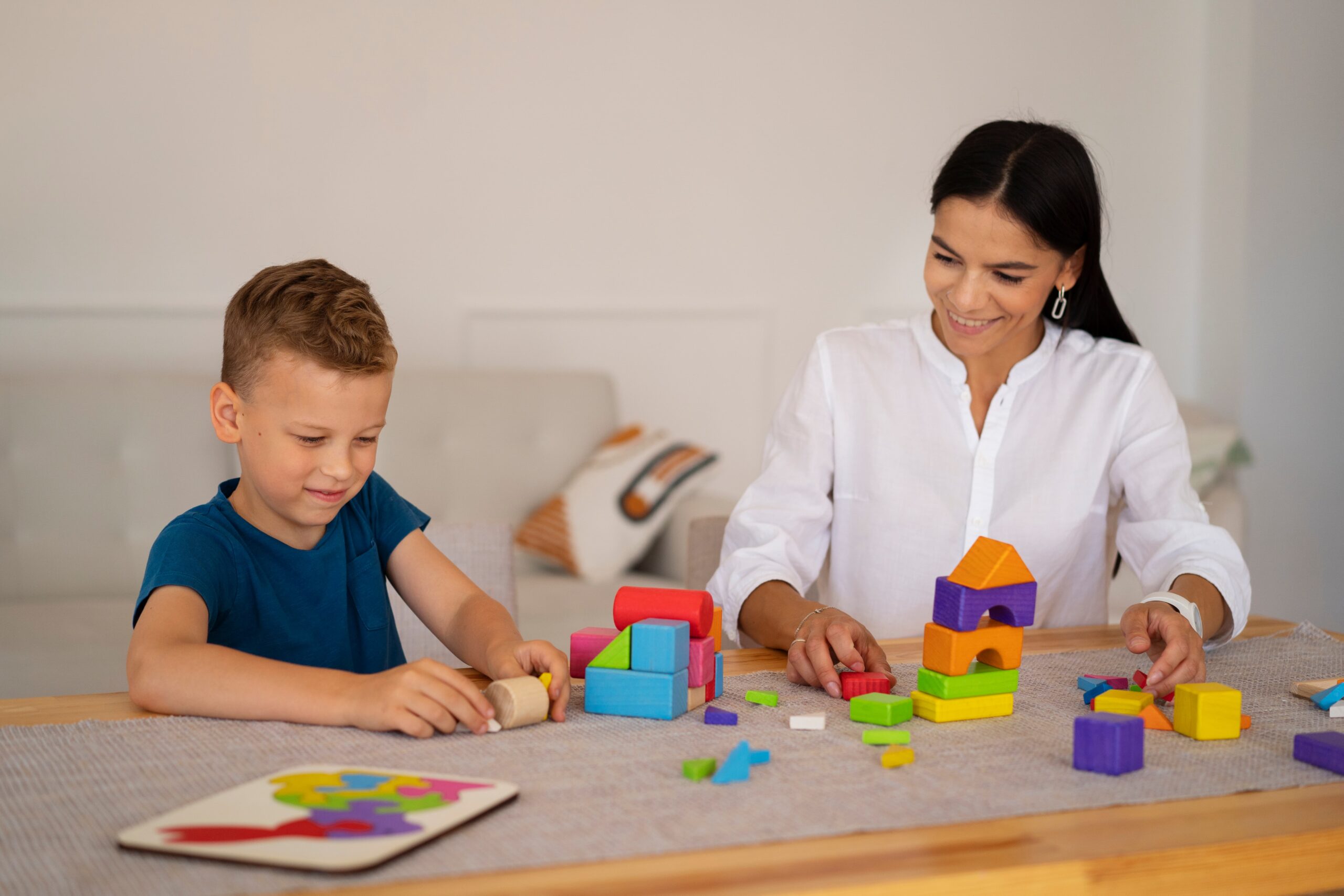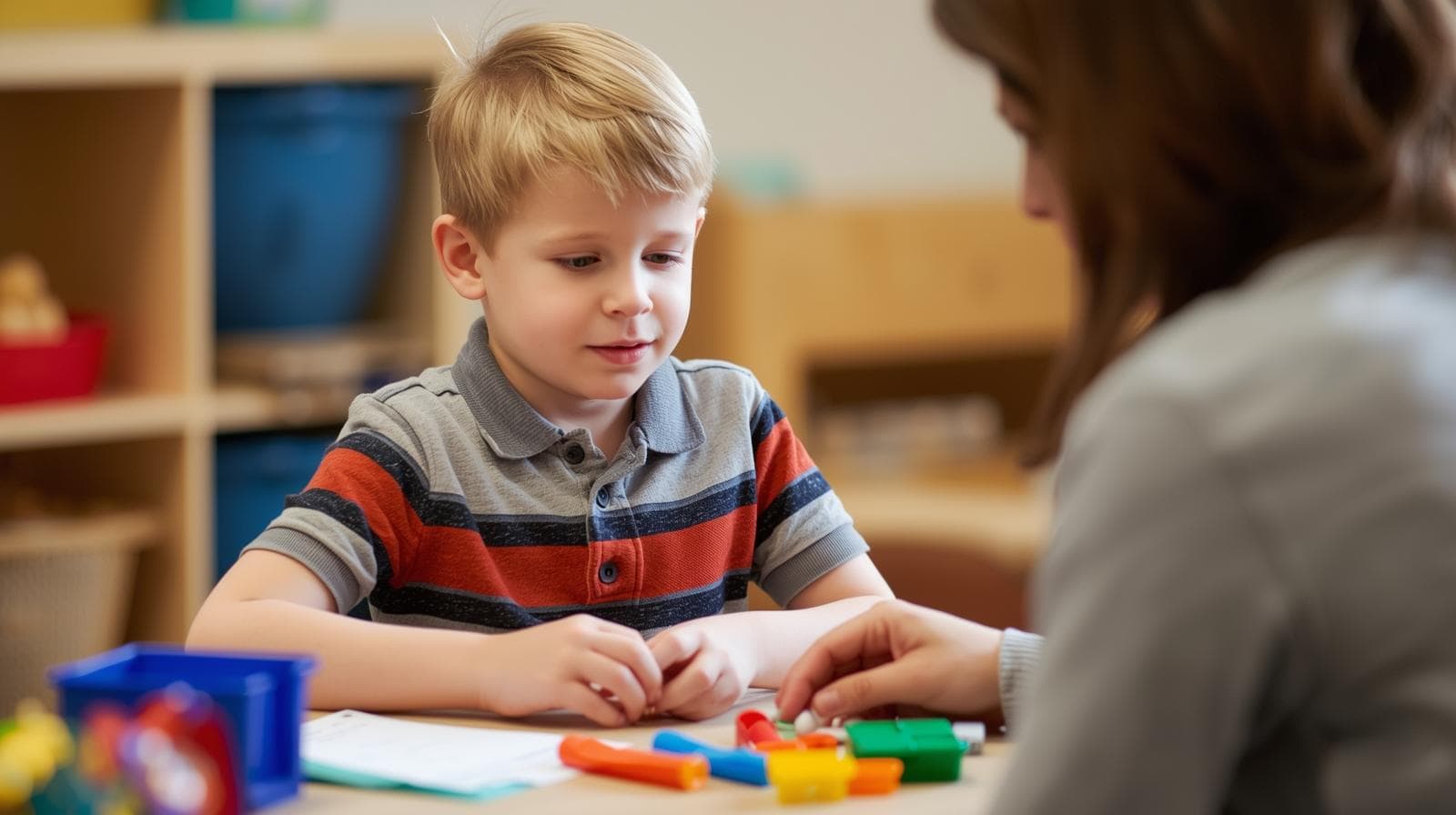Key Points:
- Errorless learning in ABA helps children with autism build confidence by reducing mistakes during skill acquisition.
- This approach uses strategic prompting and gradual fading to ensure success and promote independence.
- Maryland families benefit from ABA programs that incorporate errorless learning techniques for individualized, compassionate teaching.
When a child with autism is learning a new skill, every mistake can feel discouraging for both the child and the parent watching. Traditional learning often involves trial and error, but for children who may struggle with communication, attention, or frustration tolerance, those “errors” can lead to avoidance or anxiety. That’s where errorless learning in ABA comes in.
Errorless learning is a teaching method designed to minimize mistakes during learning. The goal isn’t perfection. It’s to create an environment where success builds confidence and motivation. This technique is widely used in Applied Behavior Analysis (ABA) programs to help children learn new skills quickly and effectively.
What Is Errorless Learning in ABA?
Errorless learning in ABA means teaching a skill in such a way that the learner responds correctly from the very beginning. Instead of allowing the child to guess or make repeated errors, the therapist provides enough support, called prompts, to ensure success.
For example, if a therapist is teaching a child to identify colors, they might start by pointing directly at the correct color or physically guiding the child’s hand to the right choice. Over time, these prompts are faded, gradually reduced until the child can perform the task independently.
This approach helps children associate learning with success, not frustration. It’s particularly beneficial for learners who might lose motivation quickly after errors or who find correction procedures stressful.
Why Errorless Learning Matters for Children with Autism
Children with autism often thrive on predictability and structure. Repeated mistakes can create stress or confusion, especially if the child doesn’t fully understand why an answer was “wrong.”
Errorless learning supports:
- Confidence building: Each successful trial reinforces the idea that learning is rewarding.
- Faster skill acquisition: Consistent success leads to quicker mastery of new skills.
- Reduced problem behaviors: Avoiding repeated errors helps minimize frustration-based behaviors.
- Positive associations with learning: Children begin to approach tasks with more willingness and engagement.
Research supports this approach – studies have found that errorless teaching can significantly improve skill acquisition and retention in children with autism.
Errorless Learning Techniques in ABA
There are several errorless learning techniques used in ABA programs, depending on the child’s learning style and the skill being taught.
- Most-to-Least Prompting: Therapists start with the highest level of support, like full physical assistance, and then reduce prompts as the child gains confidence.
- Time Delay: A brief pause between the instruction and the prompt gives the child a chance to respond independently before receiving help.
- Graduated Guidance: The therapist physically guides the child only as much as needed, fading out touch as the learner gains control.
- Stimulus Fading: Visual or auditory cues are introduced to help the child learn a response and are gradually removed over time.
Each of these errorless prompting ABA techniques ensures the child experiences success while gradually moving toward independence.
The Role of Prompts and Prompt Fading
Prompts are the cornerstone of ABA errorless learning. They can be verbal, physical, gestural, or visual. The critical part is how and when they’re faded.
If fading is too slow, the child may become prompt-dependent. If it’s too fast, the child may start making errors that reduce confidence. ABA therapists carefully balance these transitions, often using data tracking to determine when a child is ready for fewer prompts.
This level of precision is what makes learning with ABA effective – it’s data-driven and individualized.
The Connection Between Errorless Learning and Error Correction
While errorless learning aims to prevent mistakes, errors sometimes happen. In these moments, ABA therapists often use the 4-step error correction ABA procedure:
- Model the correct response.
- Prompt the correct response.
- Have the child try again.
- Return to the original instruction later to confirm mastery.
This structured correction ensures learning remains positive and constructive. By combining errorless completion techniques with structured correction, children are guided toward consistent success without fear or frustration.
When to Use Errorless Learning in ABA
Errorless isn’t used for every skill. It’s most effective for:
- Teaching new or difficult tasks where the child has no prior experience.
- Building foundational skills like imitation, labeling, or following instructions.
- Strengthening communication or social skills where success reinforcement is key.
Once a child demonstrates understanding, therapists may introduce more natural learning opportunities that include occasional challenges. The ultimate goal is independence, not dependency on prompts.
Tips for Parents Supporting Errorless Learning at Home
Parents play a vital role in extending ABA techniques beyond the therapy setting. Here are a few tips for supporting errorless learning ABA methods at home:
- Observe your child’s cues. Notice when they’re showing frustration, and step in with gentle prompts to guide success.
- Be consistent with prompting. Use the same types of prompts your ABA team uses to maintain progress.
- Celebrate small wins. Reinforce effort and participation, not just accuracy.
- Communicate with your therapist. Ask how to fade prompts properly to encourage independence.
- Keep sessions short and engaging. Frequent breaks help maintain motivation and prevent fatigue.
When parents understand and apply these techniques, learning continues beyond therapy—and becomes a natural part of daily life.
How Errorless Learning Supports Families
Families seeking ABA therapy often face a common challenge: finding teaching methods that truly connect with their child’s learning style. Errorless learning provides a structured, compassionate approach that meets children where they are.
Families benefit because:
- ABA centers frequently incorporate errorless prompting for ABA in individualized programs.
- This method reduces frustration for both children and caregivers, leading to smoother home routines.
- Families gain confidence knowing that learning moments at home align with what’s happening in therapy sessions.
Whether your child is learning basic communication or more advanced social skills, errorless learning in ABA offers a foundation of support and success.
Building Confidence Through Consistent Success
Errorless learning isn’t about avoiding failure. It’s about setting children up to succeed from the start. For families of children with autism, this method creates a safe and motivating environment for growth.
When applied thoughtfully within ABA therapy, errorless learning techniques help children master new skills, reduce anxiety, and build a lifelong love for learning.
At Steady Steps ABA, we believe every child deserves to learn in a way that celebrates progress and builds confidence. Our team at Steady Steps ABA provides ABA therapy in Maryland that incorporates errorless learning techniques and data-driven strategies tailored to your child’s unique needs.
If you’re ready to see how learning with ABA can transform your child’s daily life, contact us today to schedule a consultation. Together, we can help your child take steady steps toward independence and success.







